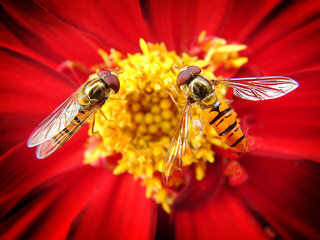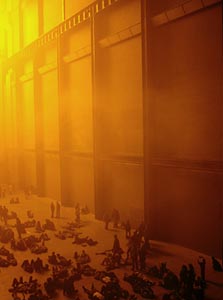Introduction
Entering photo competitions is a great way to practise and improve your photography and have some fun in the process. One of the greatest morale boosters a photographer can get is to win or even place in a highly regarded competition. Many professional photographers today have competitions to thank for getting them started on the road to a successful career.
Where to Find Competitions
Photographic competitions can be found in many places; in magazines (both photographic and other specialities), newspapers, local promotions as well as the Internet. They may be run for a variety of reasons. For example photographic clubs use competitions as one of their chief sources of entertainment and gives the members an excuse to take photos. Competitions are also used as a promotional or advertising tool for products or companies.
Prizes
The prizes offered can vary from just a certificate to a car, depending on whose running the competition. Some photographers make a handy bit of extra cash by entering competitions on a regular basis. Though prizes are a definite draw, many just enter competitions to test their skill against others.
Winning
There is one factor to be remembered if your photo doesn’t win: A photographic competition isn’t just about entering the best quality image, it also depends on the judge or judges on the day. Most judges try to be as impartial as possible, however their personal taste in the type of images they like will usually prevail. It must be remembered that photography is a form of art and any form of art is meant to conjure a reaction from the viewer. What reaction an image receives will depend on a judges personal likes and dislikes. This is why a few people, usually three, is best for judging a competition. The reasoning is that personal taste will be watered a bit and the best images will ‘float’ to the top.
If you are thinking of entering a competition or you have had little success before, here are a few tips to set you on the right track toward entering and hopefully winning a photographic competition.
Shoot for the competition!

The best pictures in a competition are often those that are shot especially for the competition in question. Most competitions have a theme and certain guidelines to be followed. Sometimes even the organisation running the competition must be considered before even composing that winning shot. So the main factors to take into account before entering an image are:
The Theme
Most competitions have a theme or a specific subject they want portrayed. Be as precise in covering the theme as possible. If it’s Children, then a child or children should fill your image frame. You can go for a cryptic approach which will win you points for originality but be careful the theme isn’t lost.
The Organisation
Often the company or organisation running the competition will conjure an idea of the type of images they want to see. The type of PR they put out about their existence and why they’re running the competition will also give you an idea. Also if they are a manufacturing company, their products and the use of the product may be important. For example if its a photographic film company, they will want to see the images on their film.
The Media Format
The next most important thing is the type of media they require. Most competitions will now accept all media including print and slide film and digital images. However some have strict guidelines on the type of digital images they want. Make sure to read the rules of entry on this before even taking your photos to avoid disappointment.
Use Impact
fig 2 © Brian Clark; First Place Close Up Competition

When you enter a competition just think how many others will be entering. It could just be a few entries in a local camera club or it could be thousands in an international competition. Whatever the numbers, your image must stand out amongst them. In order to achieve this the subject of your photo must have an eye catching feature or form of impact.
There are a few simple forms of impact that work quite well at catching the eye. You have to be careful though, the form of impact is attracting the eye of the viewer to the main subject and not something else entirely in the image.
Colour
This is probably one of the strongest forms of impact. Good strong primary colours, especially red, will draw the eye to your image when viewed with many other photos. This image by Brian Clark (Fig 2) is a great example of how colour can draw the eye, especially red.
Shape
Strong bold shapes can also attract the eye if they are well defined in an image. Landscape photos usually benefit best from including a strong shape of a rock or even mountain.
Expression
This type of impact usually suits people images best but can also work for animal photos. Strong expression such as laughter and tears work well in adding impact.
Humour
Though this could be loosely classed under expression, humour brings an impact of its own and doesn’t always have to involve people in the image. Everyone loves a good laugh and this can become the impact in an image.
These are just a few ways to grab a judges eye in a competition scenario. Taking any one of these aspects will also help you to construct and enhance an image you have planned for a particular competition or any other purpose for that matter.
Avoid Technical Faults

Your images should be well exposed, composed and in focus.
Well exposed images are a must. Images that are clearly under/over exposed are normally just rejected unless the subject matter is outstanding enough for the judges to overlook the poor quality..
Images that are out of focus are unacceptable in today’s world of auto-focus and focus aided cameras. Camera shake, subject movement etc are big faults and are easy to correct at the shooting stage.
Good composition is the main factor to the success of an image. The important thing to get right is placing the main subject of your photo within the image. There are certain guidelines here like the commonly used “rule of Thirds” or completely filling the frame with the main subject.
Many competition entries fail because of poor composition. Too much distracting detail, lack of prominence of main subject and poor placing of the main subject within the image are all major factors to the downfall of a competition entry.
Read the Rules!
Quite often, entries are disallowed over the simplest of things. Take these examples:
Closing date
If the closing date for a competition is stated then you MUST have your images in by that date. So if mailing an image remember to allow plenty of time for the mailservice to deliver the image by the closing date.
Entry Form
If the rules state that for each image entered you should have an entry form, include it with your entry. Make sure to fill out all the fields and questions asked on the entry form. Also make sure the entry form is attached or referenced in some way to the image. Regularly potential winners have been disqualified or could not be contacted due to a lack of address information. Even if there is no entry form required for a competition, ensure your photographs have sufficient details included with them such as your name, address, phone and email.
Number of Entries
If the competition rules state ‘submit 3 images’ then submit THREE images not 4, 5 or more. Don’t expect the organisers to pick your best images from a batch for you. That is not the job of the judge. However try to submit as many images as permissible. Your chances of winning automatically increases with percentages!
Media Format
Another common error is to submit images in the wrong format. If a magazine says submit slides only, do not expect to get far with your prints! With online submissions if it specifies a maximum file size or an image file format to use you MUST submit in that format. Often there is a good reason, such as leveling the playing field for all entries or just making sure the organisers can open the file to view the image. If you have saved your image in a non-standard image file do not expect it to get far, no matter how good the shot is. Just remember: If it can’t be opened, it can’t be seen
Rules to watch out for!
Most competitions are honourable. That is they seek to improve the standard of photography by giving prizes and/or recognition to photographers.
For that reason, rules often contain a clause regarding use of the winning photographs. Such as displaying the winning pictures without further payment to the photographer. Please note the part that says winning pictures. Winning photographers are usually awarded a material prize as payment-in-kind for the use of the picture in a limited fashion. This should not affect © copyright which should always remain with the photographer.
Try to avoid competitions where you may lose copyright of your images. Fortunately these are few and far between but mistakes have been made in the past.
The use of pictures submitted to competitions can lead to exploitation of amateur photographers by some organisers. This is because all too often competitions may have rules that include phrases like
…we reserve the right to use ALL images submitted…
If an image isn’t good enough to win a prize but is good enough to be used to promote the competition or any other use by the competition organisers then the photographer should be paid for use of the image!. This may only be a token amount but it should be paid and copyright of the image acknowledged to the photographer. After all, if they didn’t have YOUR images to use they would have to purchase images to use instead from professional photographers!
